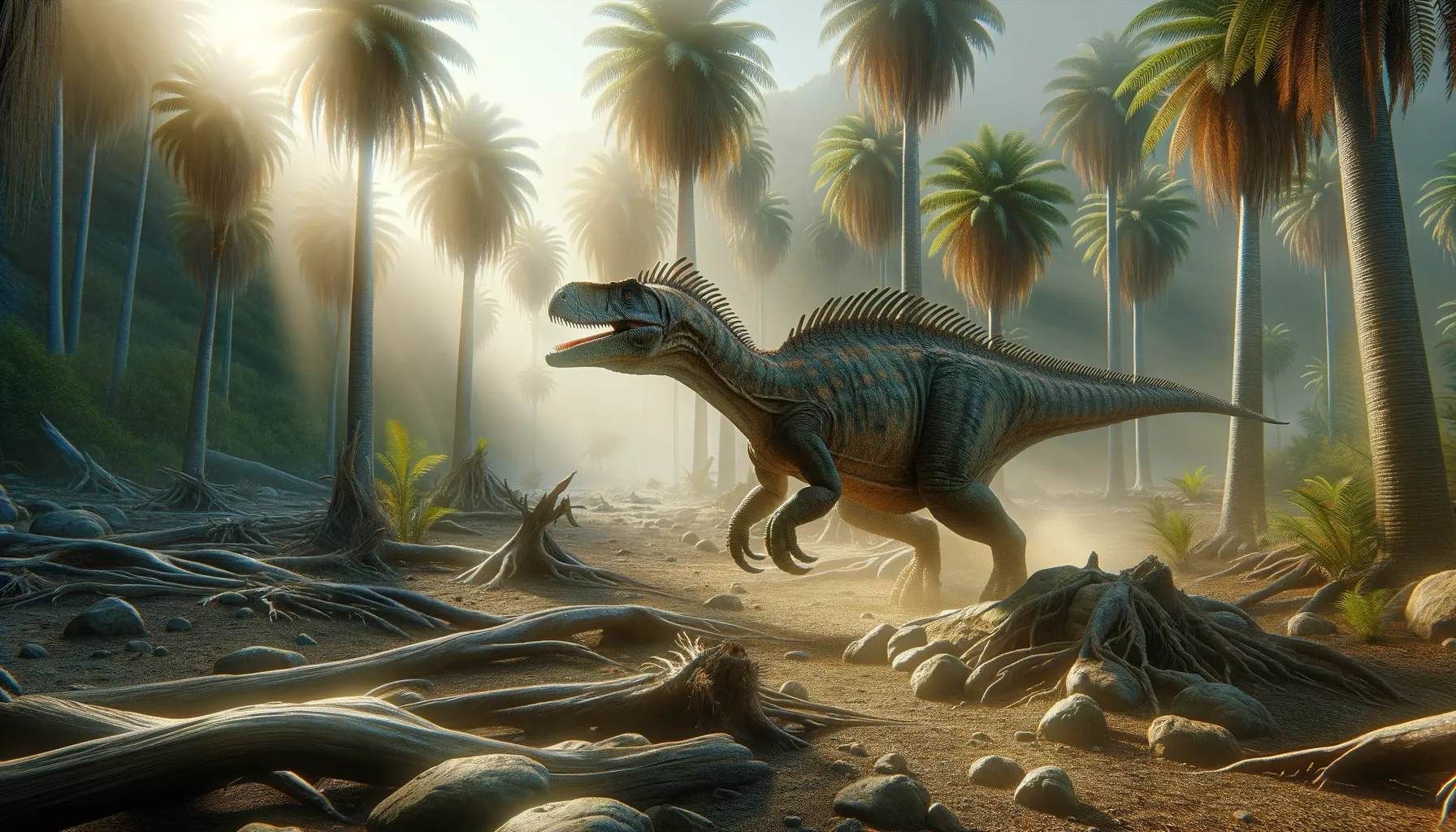
Lagosuchus
An agile ancestor in the dinosaur lineage.
Period
Triassic
Length
Measured approximately 30 to 70 centimeters long.
Height
Stood about 20 to 30 centimeters tall.
Weight
Around 2 to 5 kilograms.
Lagosuchus was an early dinosaur-like reptile that lived during the Triassic period. Its small, lightweight frame and long legs made it a swift predator, likely skilled at catching insects and small vertebrates. Specimens of Lagosuchus have provided valuable insights into the evolutionary steps leading to true dinosaurs. This creature's role in the prehistoric ecosystem was important for understanding early dinosaur behavior and biology.
Diet
Lagosuchus primarily fed on small vertebrates and insects. Its diet consisted of anything it could catch and overpower quickly.
Hunting
Lagosuchus was likely a quick and nimble hunter. It relied on its speed to catch small prey before they could react.
Environmental challenges
Lagosuchus faced the challenge of finding enough food in a world dominated by much larger reptiles. It had to compete with other small carnivores while avoiding predation from larger species. The fluctuations in climate and environment during the Triassic could have posed threats to its food sources. Additionally, as a primitive relative of dinosaurs, anatomical limitations could have affected its adaptability to changing conditions.
Speed
Fairly fast and agile for its time.
Lifespan
Up to a few decades in the wild.
First discovery
First discovered in Argentina in 1971.
Fun Facts
- Lagosuchus lived during the Late Triassic period, which was over 230 million years ago.
- It's considered a close relative of the first true dinosaurs, providing insight into the transition from early reptiles to dinosaurs.
- Lagosuchus was a small, bipedal creature, standing about a foot tall and showcasing agile movement.
- It had long hind legs compared to its front limbs, indicating it was a fast runner, similar to how some modern birds move.
- The name 'Lagosuchus' means 'rabbit crocodile,' which reflects its swift and hopping movement style.
- Fossils of Lagosuchus have mainly been found in Argentina, contributing to South America's rich prehistoric tapestry.
- This little reptile helps scientists understand the early stages of dinosaur evolution and their eventual domination of the prehistoric world.
Growth and Development
Lagosuchus likely had rapid growth rates, reaching maturity quickly to reproduce. This quick development might have been an evolutionary response to its short lifespan. Its growth was likely influenced by the availability of resources and environmental conditions. Juveniles would have been at a higher risk from predators, necessitating rapid growth to increase their chances of survival.
Habitat
Lagosuchus lived in arid and semi-arid environments that were part of prehistoric Pangaea. This environment was characterized by wide-open landscapes with sparse vegetation. Seasonal changes might have affected the abundance of resources. Evidence from fossil finds suggests it preferred areas with access to fresh water.
Interaction with other species
Lagosuchus had to navigate a world filled with larger predators and competitors. Its interactions were likely opportunistic, taking advantage of food sources as they appeared. It coexisted with other small insectivorous and carnivorous reptiles. Social interactions were likely limited to mating and possibly raising young.
Natural lifespan
Lagosuchus had a relatively short natural lifespan, estimated at a few decades.
Reproduction
Lagosuchus reproduced through the laying of eggs in nests. It likely exhibited minimal parental care, similar to modern reptiles. Clutch sizes were probably small, with multiple eggs to ensure some offspring survived to adulthood.
Social behaviour
Lagosuchus was likely solitary, except during mating seasons. Its social interactions were limited, focused primarily on reproduction. Aggression could have occurred between individuals competing for food or territory.
Fossil locations
Fossil remains of Lagosuchus have been found primarily in Argentina. These finds have provided critical information about early dinosaur precursors. The location of these fossils suggests it was widespread in the region during the Triassic period.
